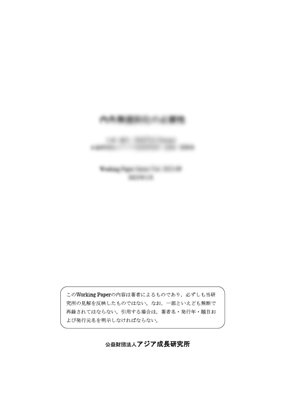Why is the Vaccination Rate Low in India?

| 執筆者 | Pramod Kumar Sur |
|---|---|
| 発行年月 | 2021年 8月 |
| No. | 2021-03 |
| ダウンロード | 9712KB |
内容紹介
Why does the vaccination rate remain low, even in countries where long-established immunization programs exist, and vaccines are provided for free? We study this lower vaccination paradox in the context of India—which contributes to the largest pool of under-vaccinated children in the world and about one-third of all vaccine-preventable deaths globally. We explore the importance of historical events shaping current vaccination practices. Combining historical records with survey datasets, we examine the Indian government’s forced sterilization policy implemented in 1976-77 and find that greater exposure to forced sterilization has had a large negative effect on the current vaccination completion rate. We explore the mechanism for this practice and find that institutional delivery and antenatal care are low in states where policy exposure was high. Finally, we examine the consequence of lower vaccination, suggesting that child mortality is currently high in states with greater sterilization exposure. Together, the evidence suggests that government policies implemented in the past could have persistent impacts on adverse demand for healthseeking behavior, even if the burden is exceedingly high.
